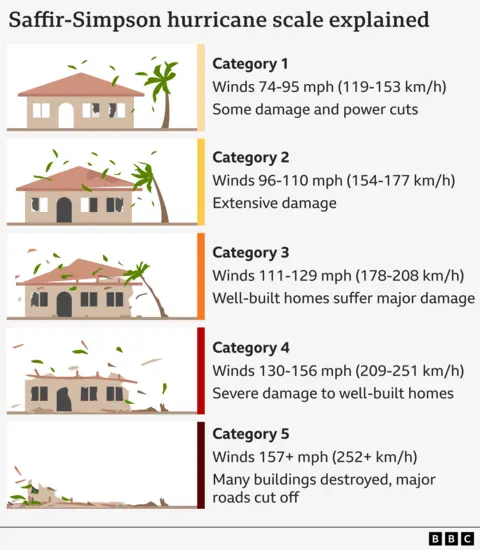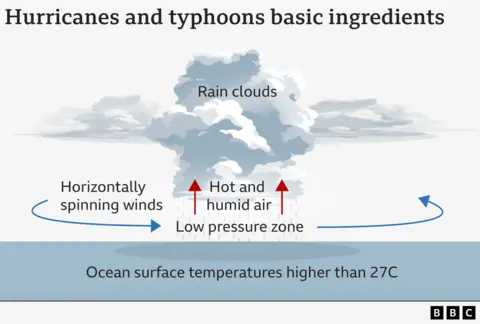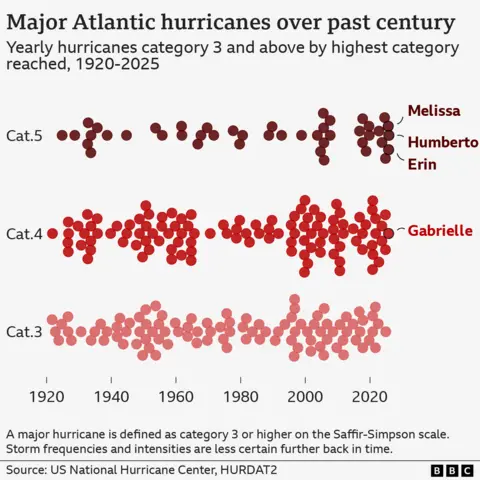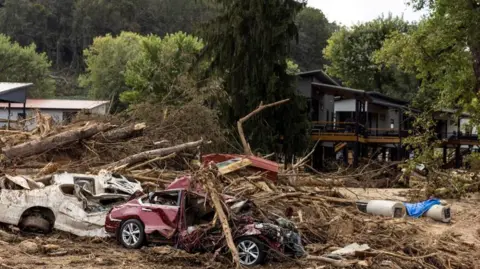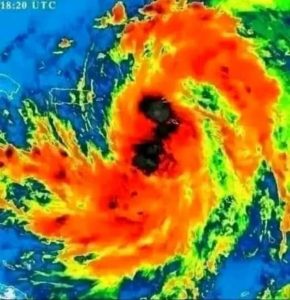
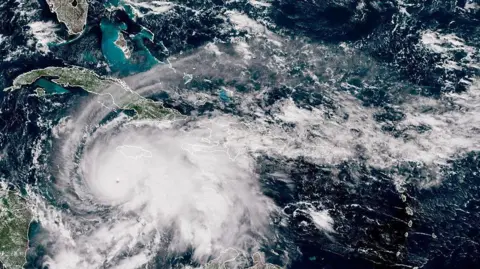 NOAA via Getty
NOAA via Getty
Hurricane Melissa, one of the strongest Atlantic storms ever recorded, created “extremely dangerous and life-threatening” conditions in Jamaica, according to the US National Hurricane Center.
Climate change is not thought to increase the number of hurricanes, typhoons and cyclones worldwide.
But warmer oceans coupled with a warmer atmosphere – fuelled by climate change – have the potential to make those that do form even more intense.
That can potentially lead to higher wind speeds, heavier rainfall, and a greater risk of coastal flooding.
What are hurricanes and where do they happen?
Hurricanes are powerful storms which develop in warm tropical ocean waters.
In other parts of the world, they are known as cyclones or typhoons. Collectively, these storms are referred to as “tropical cyclones”.

